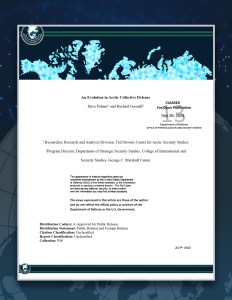Evolution is inevitable – whether it be technology, economic development, weapons systems, geopolitics, or international agreements. It is increasingly clear that the Arctic region is facing an accelerated evolutionary trend that is dramatically impacting the security environment. Unprecedented change has converged with Russian belligerence and strategic competition to shatter the previous ‘High North, Low Tension’ adage.
It is time to reassess our collective defense frameworks in the region. We must not rely upon relics of a Cold War security architecture, but rather take an innovative approach that will enable peace, stability, and prosperity in a demanding future security environment. While the North Atlantic Treaty Organization (NATO) is transforming to the realities of the current geopolitical situation – strengthened with the accession of Sweden and Finland – we must further assess defensive frameworks. The Arctic is a unique region that demands expertise in order to survive – let alone to fight and win. No longer a region focused predominantly on flight paths of ballistic missiles and strategic bombers or submarines lurking below the ice, NATO must reexamine its approach to the High North through more clearly defined command and control. This paper will examine innovative approaches to solving this challenge – to include enhancing current structures and establishing a new Joint Force Command – by building upon the legacy of successful organizations of the past but carefully designed to succeed in the security environment of the future. To execute an effective layered defense, in the face of an increasingly belligerent Russia and Sino-Russian cooperation, NATO should consider establishing a new Joint Forces Command dedicated to the security of the Northern Flank.

